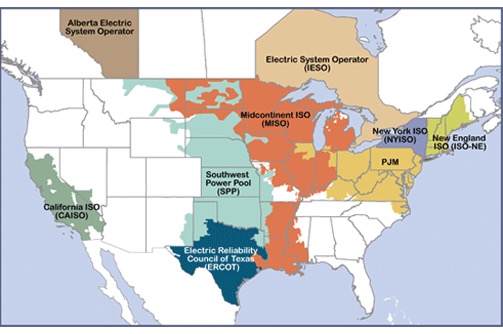A lot of hot takes on the power outages the last few days—it’s become a Rorschach test that fits perfectly into your previously held beliefs on energy policy.
So whose fault is it? It’s actually not that controversial and fairly nerdy.
1/n
So whose fault is it? It’s actually not that controversial and fairly nerdy.
1/n
First a few of the basics. Electricity generally must be consumed at the same time it’s being produced. If you want to turn a light on right now, a generator has to be spinning somewhere else on the other end of that wire.
2/n
2/n
Utilities work together to match the amount of electricity being generated (supply) to the amount needed (demand or load). Most utilities in the eastern half of the US do this by joining an independent operator—known as an RTO or ISO.
3/n
3/n
RTO stands for Regional Transmission Organization. ISO stands for Independent System Operator. They’re the same thing (not exactly, but nobody really cares), so I just call them all RTOs.
4/n
4/n
Here’s a map of the RTOs in North America. This winter “event” is mostly impacting ERCOT, SPP, and MISO.
5/n
5/n
As I was saying, each RTO works with its members (the utilities) to make sure they have enough supply to match demand. They spend a lot of time doing engineering studies and deciding what the worst-case scenario might be.
6/n
6/n
The studies look at how much electricity was used in the past, guesses how much will be needed in the future, takes into account all kinds of weather patterns, and assumes some generators won’t operate as planned.
7/n
7/n
They simulate the probability of worst-case scenarios and eventually use those studies to determine how much generation each utility needs to serve their load. In most RTOs, this is something like 10–20% more than their peak.
8/n
8/n
These studies are the basis for how much generation each utility obtains. And this week, they were proven wrong (sort of). The reason for rolling blackouts is that we DON’T have enough supply to meet load.
9/n
9/n
So it’s the RTOs’ fault? Not really. They develop the studies with input from the utilities and the approval of the Federal Energy Regulatory Commission (FERC). They are well vetted, and all three RTOs around here are in the same boat.
10/n
10/n
Also, the studies have to set a limit to the amount of reliability folks are willing to pay for. For the last 80+ years, the industry has been using the 1-in-10 standard—i.e., they plan to an expectation of 1 day of outages in 10 years.
11/n
11/n
Essentially, they might’ve assumed an event like this could happen, but the probability was so low that they chose not to protect for it. It’s a balance between protecting for all scenarios and building more generation than you need.
12/n
12/n
What about wind and natural gas? They were contributors, but the real culprit was extremely low temperatures in the southern states for longer periods than planned for.
13/n
13/n
Wind contributed in that it wasn’t windy—so they couldn’t help—and in some cases (but not much) the cold took them offline in the South. The RTOs/utilities might be adjusting how much they assume they can rely on them in future events.
14/n
14/n
Natural gas contributed in that many southern plants and wells can’t operate in the cold. In addition, there wasn’t enough natural gas to go around with the extended cold, and residential heating usually comes first.
15/n
15/n
So now what? There will be investigations, but most of the issues aren’t really new. Policy debates on natural gas pipelines and storage will be back, and I’m guessing there will be more focus on the studies I mentioned above.
16/n
16/n
Just including this year’s weather in future models could resolve some of the issues by requiring utilities to carry more generation. There could also be renewed debates on assumptions for generator outages and the 1-in-10 standard.
17/n
17/n
SPP has only been studying for summer peaks (despite some calls to look at a winter peak), so that is likely to be an area of focus. MISO and ERCOT already do seasonal planning.
18/n
18/n
These policy debates, which usually take place over years in monthly day-long conference calls will gain some urgency. FERC will probably provide their advice. The studies will evolve, and they’ll be more ready for the next one.
19/n
19/n
Anywho, it’s been amusing to get so many questions from friends the last few days. Most only make the mistake of asking me about work one time.
20/20
20/20

 Read on Twitter
Read on Twitter


